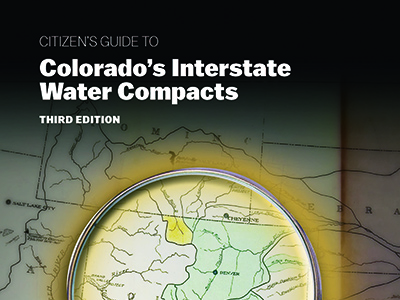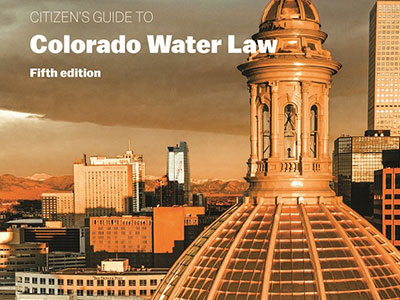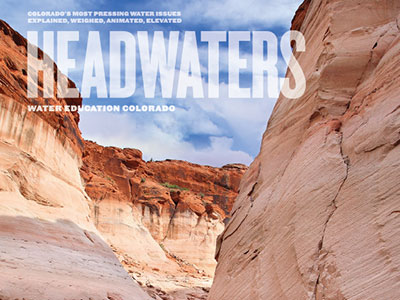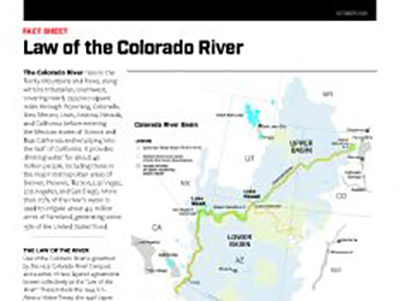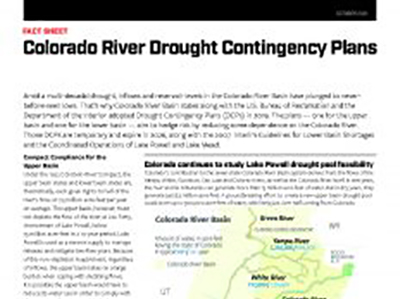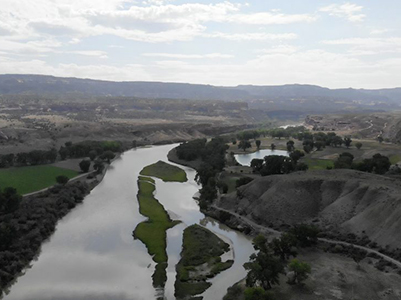Interstate Compacts
The number of interstate compacts that assist in governing how much water Colorado is entitled to use and consume.
Nine interstate compacts, two Supreme Court equitable decrees, two international treaties, and two memoranda of understanding govern how much water Colorado is entitled to use and consume within its boundaries.
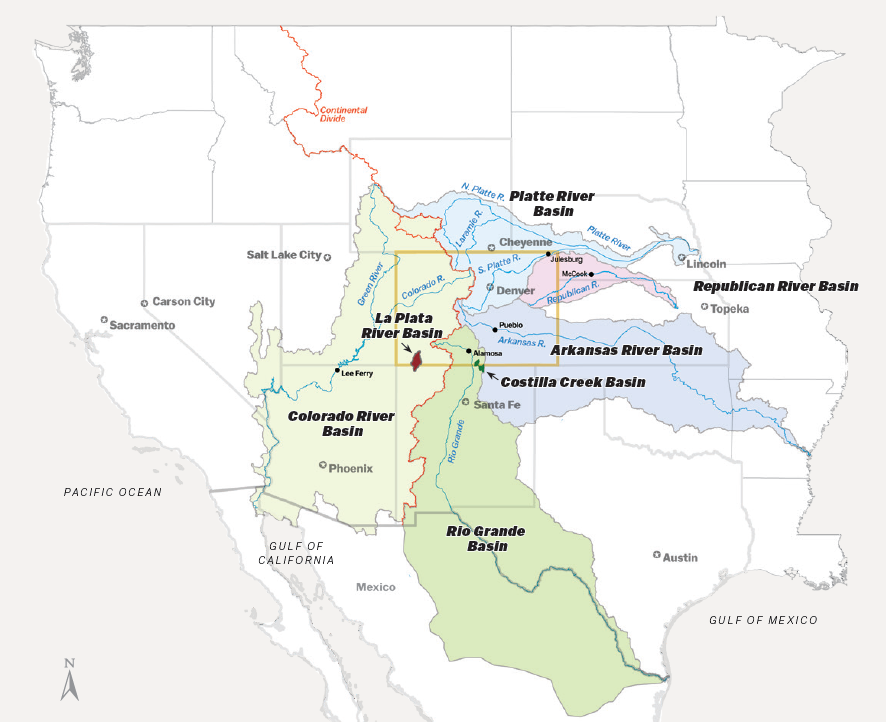
How Compacts Work
A compact is an agreement between two or more states approved by their state legislatures and Congress under the authority of the U.S. Constitution (Article I, §10(2)). Compacts are akin to treaties between states, the primary purpose of which is to establish under state and federal law how the water of an interstate stream system will be shared between users in different states.
A state may file a lawsuit in the U.S. Supreme Court asking for an equitable apportionment of interstate stream waters among the states, where the court decides how to fairly divide the waters. Congress can also make an equitable apportionment, as it did by the Boulder Canyon Project Act for Arizona, California and Nevada’s shares of Colorado River water.
The states can fashion specific enforceable provisions to share the water of an interstate stream. A compact avoids the risk of repeated Supreme Court lawsuits to determine each state’s fair share of the water. Ultimately, it creates certainty for the parties.
A state can file suit in the Supreme Court for enforcement of its rights under the compact. A state may seek an injunction to require a non-complying state to abide by the provisions of the compact, repayment of water lost to the state and/or monetary compensation. Some compacts establish a commission that has administrative and enforcement power.
International Treaties
Mexican Treaty on the Rio Grande, Tijuana and Colorado Rivers (1944). Guarantees delivery of 1.5 million acre-feet of Colorado River water per year to Mexico except in times of extraordinary drought when the United States can reduce deliveries in the same proportion as the United States cuts its consumptive use. If the river does not have adequate water to meet the obligations under the treaty, the Upper Colorado River Basin and Lower Colorado River Basin must share the obligation of reducing use to make up deficiencies.
Convention with Mexico on the Rio Grande above Fort Quitman, Texas (1906). Requires that the United States deliver 60,000 acre-feet of water annually at the International Dam at Ciudad Juarez except during periods of extraordinary drought. Elephant Butte Reservoir in New Mexico was constructed in part to meet this obligation.
Interstate Compacts
Colorado River Compact (1922). Apportions 7.5 million acre-feet of consumptive use per year to the Upper Basin and the same amount to the Lower Basin. The Upper Basin states may not cause the flow of the Colorado River at Lee Ferry, Ariz., to be depleted below an aggregate of 75 million acre-feet for any period of 10 consecutive years.
La Plata River Compact (1922). Grants Colorado and New Mexico unrestricted use of the river between Dec. 1 and Feb. 15. At other times, each state can use the flow of the river at the state line if the flow is in excess of 100 cubic feet per second. If the flow is less, Colorado must ensure delivery of flow equal to one-half the flow of the river at Hesperus, Colo.
South Platte River Compact (1923). Divides the waters of the South Platte River between Colorado and Nebraska, giving Colorado the right to fully use the water between Oct. 15 and April 1. During the irrigation season, Colorado will deliver 120 cubic feet per second to Nebraska at Julesburg. If the flow is less than 120 cubic feet per second, Colorado must curtail certain diversions.
Rio Grande River Compact (1938). Details obligations of Colorado and New Mexico to deliver water for downstream users, including Mexico; sets forth system of debits and credits and rules to account for fluctuations in stream flow. A commission is established to administer terms.
Republican River Compact (1942). Divides the waters of the Republican River Basin between Colorado, Kansas and Nebraska. Colorado is granted 54,100 acre-feet of water each year. The compact allocates 190,300 acre-feet of water each year to Kansas and 234,500 acre-feet of water each year to Nebraska. If the water supply of any source varies, the allocations also change. A commission oversees compliance.
Costilla Creek Compact (1944; revised 1963). Establishes uses, allocations and administration of the waters of Costilla Creek in Colorado and New Mexico. A commission oversees compliance. Later amendments specify rights to water in specific facilities.
Upper Colorado River Compact (1948). Apportions a percentage of available river water to each Upper Basin state as follows: Arizona, 50,000 acre-feet each year; Colorado, 51.75%; Utah, 23%; Wyoming, 14%; and New Mexico, 11.25%. The Upper Colorado River Commission, with representation from Colorado, Wyoming, New Mexico, Utah and the federal government, oversees compliance.
Arkansas River Compact (1948). Divides the waters of the river between Colorado and Kansas primarily based on 1948 conditions. An interstate agency administers provisions of the compact and oversees operations of John Martin Reservoir. Principles adopted in 1980 provide for storage accounts in John Martin Reservoir for water users in both states.
Animas-La Plata Project Compact (1968). Unusual because it addresses a water project rather than dividing river waters, the compact gives New Mexico and Colorado equal priority in rights to store and divert project water. The ambitious project has been repeatedly scaled back. The one remaining reservoir started filling in 2009.
U.S. Supreme Court Cases
Nebraska v. Wyoming, 325 U.S. 589 (1945) (North Platte River). Divides water in the North Platte River between Colorado, Nebraska and Wyoming. Limits total irrigation in Jackson County to 145,000 acres and 17,000 acre-feet of storage for irrigation in each season. Limits total water exports from the North Platte River in Colorado to no more than 60,000 acre-feet during any 10-year period.
Wyoming v. Colorado, 353 U.S. 953 (1957) (Laramie River). Establishes states’ rights to water in the Laramie River Basin. Limits total diversions from the Laramie River in Colorado to 39,750 acre-feet.
Agreements
Pot Creek Memorandum of Understanding (1958; revised 2005)
Sand Creek Memorandum of Agreement (1997)

